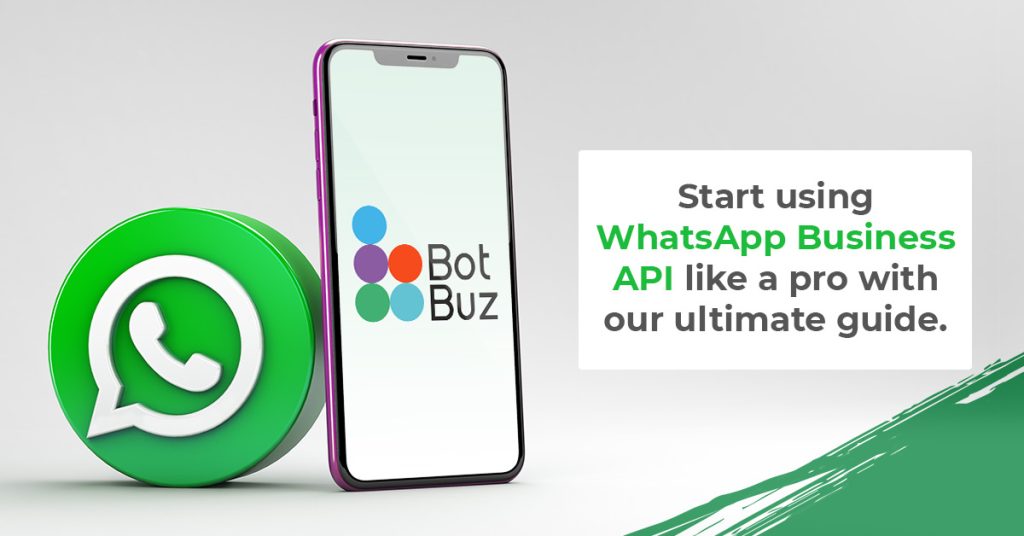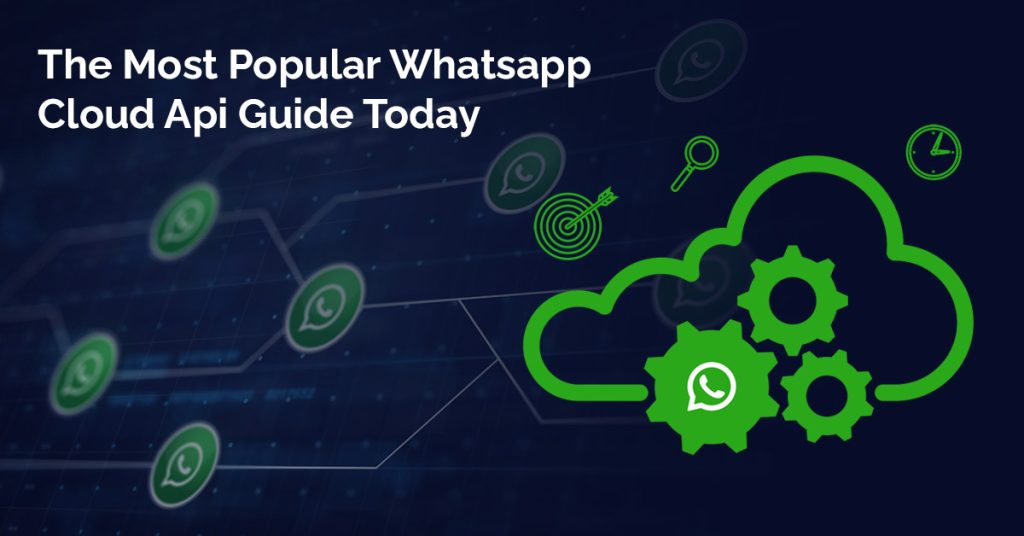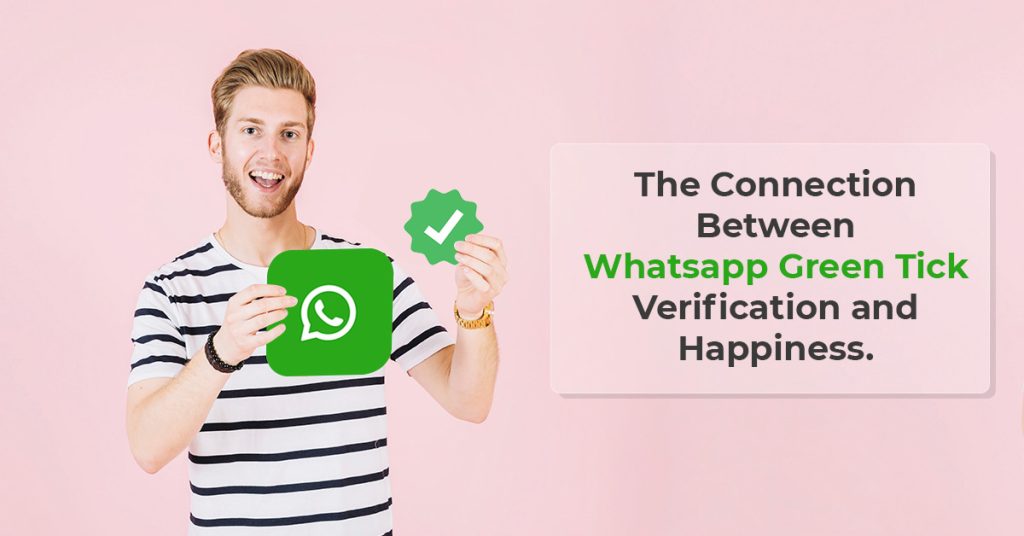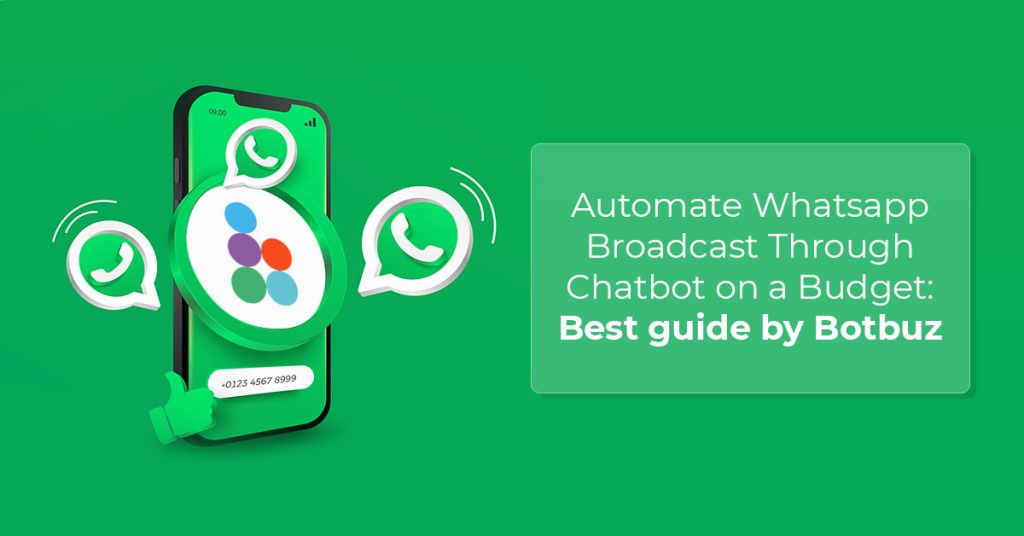- Interactive WhatsApp messaging in 2025 :
- Understanding Interactive WhatsApp Messages :
- Types of Interactive Message Templates :
- Why Use Interactive Messages and Templates on WhatsApp ?
- Prerequisites for Setting Up Interactive WhatsApp Messages :
- Using Botbuz Chatbot to Send Interactive Message Templates on WhatsApp :
- Conclusion :
Interactive WhatsApp messaging in 2025 :
WhatsApp has grown beyond simple messaging. It is now a major tool for businesses to connect with customers. It’s a direct, personalized way to reach a huge audience. Interactive messages, like buttons and quick replies, are key to getting customers involved. They make conversations dynamic, gather feedback, and offer smooth support. Thus, boosting customer happiness and loyalty.
In 2025, WhatsApp’s interactive messaging is all about personalization, automation, and a better user experience. AI-powered chatbots can give instant support. It creates custom customer journeys, and offers personalized recommendations. New features, such as rich media templates and easy CRM integration, make interactive messaging even more powerful.
AI chatbots are getting smarter, understanding natural language and giving personalized answers. They can handle many tasks, from FAQs to orders. It lets human agents deal with more complex issues. Businesses can use data and AI to build custom customer journeys on WhatsApp. This means messages are tailored to each customer’s preferences, behavior, and past purchases, making interactions more relevant.
WhatsApp now supports rich media templates. So businesses can send interactive messages with images, videos, and carousels. This is great for showcasing products, giving detailed info, and creating visually appealing experiences. WhatsApp is also becoming more integrated with CRM systems. It is helping businesses manage customer data and interactions more effectively. This allows for personalized support, tracking customer journeys, and gaining valuable customer insights.
Finally, WhatsApp is giving businesses better analytics on message performance, response rates, and conversions. This data helps optimize messaging strategies and improve customer engagement. In short, interactive WhatsApp messaging in 2025 is about creating personalized, engaging, and seamless customer experiences. Businesses that use these trends and new features will be in a good position to build strong customer relationships and grow.
Understanding Interactive WhatsApp Messages :
Interactive WhatsApp messages let customers do more than just read text. They can actually engage directly in the chat. This makes conversations much more dynamic and efficient, leading to a better experience overall.
There are several types of interactive messages. Reply buttons offer predefined options. It makes it super easy for customers to respond quickly without typing. They’re great for simple questions or getting feedback. List messages present choices in a clear, organized way, perfect for menus or service options. This helps customers navigate easily and avoid information overload.
Single-product messages are designed for e-commerce. It showcases one product at a time with details like images and prices. It’s a visually appealing way to highlight items right in the chat. Multi-product messages do the same but for multiple products in a carousel. It lets customers browse a selection which is ideal for online stores.
Flow messages create guided, step-by-step interactions, almost like mini-apps. They walk customers through a process, like booking an appointment. This simplifies complex tasks and makes sure you get all the information you need.
Using interactive messages has many benefits for businesses. They improve the customer experience by making communication easier and more engaging. They also increase efficiency by automating routine tasks. Interactive messages lead to higher engagement because they encourage customer participation. They make it simpler to collect feedback and other important information. Finally, they can boost conversions by streamlining the customer journey. Thus, making it easier to complete a purchase or take another desired action.
What Are WhatsApp Interactive Message Templates?
WhatsApp Interactive Message Templates are like pre-made designs for interactive messages. They’re not just about the words; they include the buttons, lists, or product displays, all formatted in a specific way. Think of them as blueprints that businesses can use to create consistent and engaging conversations with their customers.
These templates are really important. They help businesses to maintain a consistent brand image and make it much easier to create interactive messages. Instead of starting from scratch every time, a business can use a template as a base. It can then customize it with the specific details for that particular conversation. This saves a lot of time and effort, especially if you’re sending similar messages often.
Why is an Interactive Message Necessary?
Interactive messages are crucial for businesses on WhatsApp. They boost response rates and make customer interactions much smoother. They’re a key to modern communication.
One big reason why interactive messages are so important is that they make it easier for customers to respond. Things like buttons and quick replies mean customers don’t have to type long messages. It encourages them to engage more. Plus, these interactive elements present clear choices. So there’s less confusion and it’s easier to understand what to do. Interactive messages are also more engaging than just plain text. They make the conversation feel more dynamic and encourage people to participate.
Beyond just getting more responses, interactive messages also streamline communication. They speed things up by reducing the need for back-and-forth typing. Customers can quickly select options or give info, leading to faster solutions.
They also automate answers to common questions and requests. It means customer service agents have more time to deal with complicated issues. And if you need to collect specific information from customers, interactive messages make that easy too, like using buttons for feedback or lists for preferences.
The overall result is a better customer experience because communication is easier, faster, and more engaging. Businesses also become more efficient by automating tasks and reducing manual replies. On top of that, interactive messages can give you valuable insights into what customers like and how they behave.
So, if a business wants to offer a seamless and efficient experience on WhatsApp, interactive messages are a must. They improve response rates, streamline communication, and offer a bunch of benefits that lead to happier customers and business growth.
When Can We Use Interactive Messages ?
Interactive messages are incredibly flexible. They can be used in lots of different business situations. Let’s look at some examples, starting with customer support.
For customer support, interactive messages can be used for FAQs. Instead of just listing questions and answers, you can use lists or buttons so customers can quickly find what they need. If a customer is having trouble with something, interactive flows can guide them through troubleshooting steps. They ask specific questions and offer tailored solutions. Getting feedback is also easier with interactive messages. You can use buttons for quick ratings after a support interaction. Providing order updates is another great use case, with a button to easily track the order. And if the automated options don’t help, you can always offer a button to connect with a live agent.
Moving on to sales, interactive messages can be used for product recommendations. Based on what a customer has bought before, you can suggest other products they might like using images and descriptions. Personalized promotions are more effective with interactive elements, like a button to instantly claim an offer.
Order confirmations can also be interactive, with details and a button to view the full order summary. After a purchase, you can use interactive messages for upselling or cross-selling, suggesting related products or upgrades. And if you’re trying to generate leads, you can use interactive messages to qualify them by asking questions about their needs and interests.
For appointment booking, interactive messages make scheduling much easier. Customers can see available time slots and book directly within WhatsApp. Sending appointment reminders with a button to confirm or reschedule is also helpful. If a customer needs to reschedule, they can do it right through an interactive message. And of course, confirmations with all the appointment details can also be sent interactively.
Beyond these specific areas, interactive messages can be used for other things too. You can conduct short surveys with buttons or lists for responses. Sending important notifications, like delivery updates, with interactive elements lets users take action right away. And if you have a loyalty program, you can offer members exclusive deals and promotions through interactive messages. Basically, the possibilities are endless! The key is to think about how interactive messages can make communication more efficient, engaging, and convenient for your customers.
Why Use Interactive Template Messages to Start Conversations ?
Interactive template messages are a great way to start conversations with customers. They boost engagement and lead to more conversions. They’re a powerful tool for proactive communication.
One of the main reasons they’re so effective is that they enhance customer engagement. Templates let businesses reach out to customers with relevant and personalized messages, showing that you understand their needs. They also include clear calls to action, guiding customers towards the next step, whether it’s browsing products or booking an appointment.
Templates can also include rich media like images and videos. It makes the first message more visually appealing. And because they often have interactive elements like quick reply buttons, customers can respond easily without typing a lot, making it easier to engage.
These enhanced interactions translate to reduced drop-off rates and increased conversions. Templates create a smooth and seamless experience. It makes it easy for customers to find information and take action. This reduces frustration and keeps them in the conversation. Because you can tailor templates to specific customer groups, the messages are more relevant and effective. Clear calls to action and engaging content also lead to higher click-through rates. It sends more traffic to your website or wherever you want customers to go.
Ultimately, interactive templates directly contribute to increased conversion rates. By guiding customers through the conversation and making it easy for them to take the next step. Whether it’s buying something or signing up for a service, they make the whole process smoother and more efficient. Using templates also helps maintain a consistent brand image across all customer interactions, which builds trust.
So, interactive template messages are a proactive and efficient way to start conversations. They boost engagement with personalized and relevant content, along with clear calls to action. This leads to fewer drop-offs, more clicks, and ultimately, more conversions. They make that first interaction positive and encourage customers to keep talking and take the desired action.
Types of Interactive Message Templates :
Some common types of interactive message templates, starting with Call-to-Action (CTA) templates. These are designed to get customers to do something specific, like clicking a button to shop, book, or learn more. They’re all about driving action right away.
For example, an e-commerce business might use a CTA template like, “Check out our new summer collection! [Button: Shop Now].” Service businesses could use something like, “Book your free consultation today! [Button: Book Now].” If you have a promotion, you could say, “Get 20% off your first order! [Button: Claim Offer].” CTAs are also great for event invitations, like “You’re invited to our exclusive webinar! [Button: Register Now],” or for getting feedback, like “How was your experience? [Button: Leave Feedback].”
Next up are Quick Reply message templates. These simplify customer responses by giving them pre-made buttons to tap. They make it super easy for customers to engage without having to type a lot. Quick replies make communication much more efficient. Customers can respond with a single tap. It speeds up the conversation and improves response times. They also reduce errors because there’s no typing involved. So there’s less chance of typos or misunderstandings.
Quick replies also streamline interactions by guiding the customer through the conversation. Thus, making it easier to find what they need. They’re great for collecting information in a structured way, like asking “What type of service are you interested in?” with buttons for “Repair,” “Installation,” and “Maintenance.” Because they’re so easy to use, quick replies encourage customers to interact more, which leads to higher engagement.
And finally, they can be used to trigger automated responses, making communication even more efficient. So, both CTA and Quick Reply templates are essential tools for businesses that want to improve their WhatsApp communication. They make interactions more engaging, efficient, and user-friendly.
Why Use Interactive Messages and Templates on WhatsApp ?
Using interactive messages and templates on WhatsApp is a game-changer for businesses. They’re a powerful way to make customers happier, save time, and build stronger brand connections.
One of the biggest advantages is boosting customer satisfaction. Interactive messages make it so easy for customers to talk to your business. They can quickly respond, choose options, or give feedback with just a tap or two, no more typing long messages. Templates also let you personalize messages, making customers feel valued. And because interactive elements like quick replies speed up responses, customers get help faster, which they really appreciate. You can even use interactive messages to proactively offer support, showing customers you care.
These tools also save businesses a lot of time. They automate routine tasks and responses. It frees up your team to handle more complex issues. By automating answers to common questions, you reduce the number of manual replies needed. Thus, making communication much more efficient. Interactive messages also make it easier to collect specific information from customers in a structured way. It saves time and effort compared to surveys or phone calls.
Finally, interactive messages and templates enhance brand engagement. They encourage customers to actively participate in conversations. It strengthens their connection with your brand. A smooth and efficient experience with interactive messages makes your brand look modern, responsive, and customer-focused. And by providing personalized and engaging interactions, you build stronger relationships with your customers, which is key to loyalty and repeat business.
So, if a business wants to provide a great customer experience, interactive messages and templates on WhatsApp are essential. They boost satisfaction, save time, and build stronger brand connections. This all contributes to a more loyal customer base and business growth.
Prerequisites for Setting Up Interactive WhatsApp Messages :
Setting up interactive WhatsApp messages requires a few key things:
First, you’ll need access to the WhatsApp Business API. This is the official way for businesses to use WhatsApp at scale and access features like interactive messages. You can’t do it with the regular WhatsApp Business app.
Next, you need an approved WhatsApp Business Account. This involves verifying your business and complying with WhatsApp’s policies. This approval process ensures that businesses are legitimate and use the platform responsibly.
You’ll also need a chatbot or automation platform, like Botbuz. These platforms help you build and manage your interactive messages, automate responses, and integrate with other systems. They’re essential for creating a seamless and efficient experience.
Finally, it’s crucial to understand your customer’s needs and how they’ll interact with your messages. Thinking about their use cases will help you design effective and helpful interactions. You also need to be aware of and follow WhatsApp’s compliance guidelines to avoid your account being penalized or suspended. This includes things like getting opt-in from users before sending marketing messages. It also means being transparent about how you use their data.
Using Botbuz Chatbot to Send Interactive Message Templates on WhatsApp :
Botbuz makes it easier to automate interactive WhatsApp messages. It’s a platform that helps you build and manage these messages without needing to be a tech whiz. Let’s walk through the general process.
First, you’ll need to create a Botbuz account and connect it to your approved WhatsApp Business Account. This connection requires WhatsApp Business API access, as mentioned before. Think of it as linking the two platforms together.
Next, you’ll work on creating your message templates. Botbuz may have some ready-made ones, but you can also create your own. This involves writing the message, adding any images or videos, and, most importantly, setting up the interactive elements like buttons or lists. You’ll also define what happens when a user clicks on something. Remember to follow WhatsApp’s template rules.
Then comes the workflow design. This is where you plan out the conversation. You’ll decide which template is sent first and what happens based on how the user responds. Botbuz usually has a visual interface, like drag-and-drop, to make this easier.
Before sending your messages to real customers, you’ll want to test them thoroughly. Botbuz should have a way to simulate conversations so you can make sure everything works correctly and catch any errors.
Once you’re happy with your setup, you can deploy your interactive messages. Botbuz might offer different ways to do this. It is done by connecting with your CRM or e-commerce platform. This lets you integrate WhatsApp interactions with your other business processes.
Finally, Botbuz should give you analytics and monitoring tools to track how your messages are doing. You can check things like response rates and click-through rates. This data is crucial for making your messages even better.
Botbuz and similar platforms often offer features like a visual flow builder, a library of pre-made templates, integrations with other platforms, analytics, multi-language support, and user management. In short, Botbuz simplifies the process of creating and managing complex interactive message flows on WhatsApp, even if you’re not a coder.
Conclusion :
In conclusion, interactive message templates on WhatsApp, especially when combined with the power of chatbots, represent a paradigm shift in how businesses communicate and engage with their customers. They move beyond static, one-way broadcasts to create dynamic, personalized, and truly interactive conversations.
By using pre-designed templates, businesses can ensure brand consistency. It streamlines communication workflows, and significantly reduces the effort required to create engaging experiences. The integration of chatbots elevates this further. It enables 24/7 availability, instant responses to common queries, and automated handling of routine tasks.
This frees up human agents to focus on more complex issues. It leads to increased efficiency and improved customer satisfaction. Ultimately, the strategic use of interactive message templates & chatbots on WhatsApp empowers businesses to build stronger customer relationships. It drives conversions, and achieves a competitive edge in today’s increasingly digital landscape. Embracing these tools is not just a trend, but a necessity for businesses looking to thrive in the mobile-first world.




